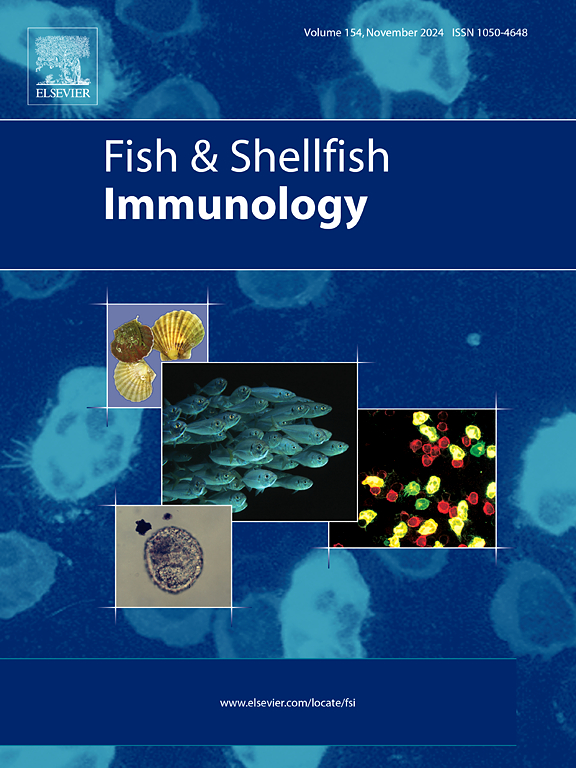PIASy of orange-spotted grouper (Epinephelus coioides) negatively regulates RLRs-mediated innate antiviral immunity
IF 4.1
2区 农林科学
Q1 FISHERIES
引用次数: 0
Abstract
During viral infection, RIG-I-like receptors (RLRs) are cytoplasmic pattern recognition receptors that recognize and bind to viral RNA components, initiating the transcription of interferon-related genes, inflammatory cytokines and other factors, thereby triggering the cellular production of an antiviral innate immune response. The protein inhibitor of activated signal transducer and activator of transcription (STAT) (PIAS) protein family has become a hot research topic due to its extensive involvement in the regulation of cytokines, inflammatory factors and innate immune signaling pathways. In the present study, we investigated the role of fish PIASy in Singapore grouper iridovirus (SGIV) and red spotted grouper nervous necrosis virus (RGNNV) infections. The homologous sequence of orange-spotted grouper (Epinephelus coioides) PIASy gene (EcPIASy) was cloned and characterized, which encoded a 498-amino acid protein with 99.20 % homology to Plectropomus leopardus. EcPIASy is expressed mainly in gills, blood, and liver. Subcellular localization showed that EcPIASy was uniformly distributed in the nucleus. Overexpression of EcPIASy promoted SGIV and RGNNV replication, and inhibited the expression of interferon related genes and pro-inflammatory factors induced by viruses. In addition, EcPIASy interacts with RLR signaling pathway-related genes EcMDA5, EcIRF3 and EcIRF7, whereas the interaction between EcPIASy and EcIRF3 does not depend on any specific structural domain of EcPIASy. The results provide a better understanding of the relationship between PIASy and viral infection in fish.
求助全文
约1分钟内获得全文
求助全文
来源期刊

Fish & shellfish immunology
农林科学-海洋与淡水生物学
CiteScore
7.50
自引率
19.10%
发文量
750
审稿时长
68 days
期刊介绍:
Fish and Shellfish Immunology rapidly publishes high-quality, peer-refereed contributions in the expanding fields of fish and shellfish immunology. It presents studies on the basic mechanisms of both the specific and non-specific defense systems, the cells, tissues, and humoral factors involved, their dependence on environmental and intrinsic factors, response to pathogens, response to vaccination, and applied studies on the development of specific vaccines for use in the aquaculture industry.
 求助内容:
求助内容: 应助结果提醒方式:
应助结果提醒方式:


